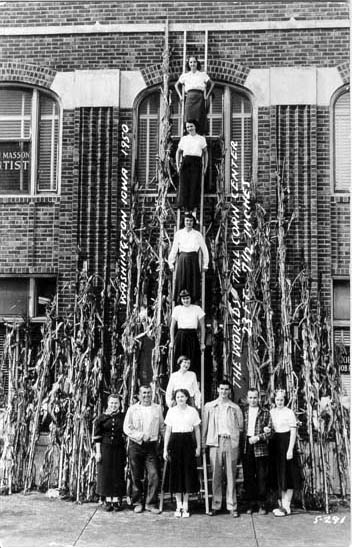 June 17, 2020–When I first moved to the Hill Country, I was not prepared for how seriously Texans take their history.
June 17, 2020–When I first moved to the Hill Country, I was not prepared for how seriously Texans take their history.
Growing up in one of the 49 non-Texan states, I arrived unaware of the colorful story of how this 6-flagged region became the Lone Star State.
Apparently every public school student is required to learn their Texas history, from the landing on the Gulf shore to the landing on the moon. In Iowa, our study of state history was one chapter of one semester. The only thing I remember is that Iowa inspired Grant Wood to paint and Antonín Dvořák to compose. And they both left the state to become famous.
Of course it is fitting that this history agnostic would end up in Fredericksburg, where you can’t trip over a stone without someone telling you a story about how it came to be in your path. I actually overheard a conversation in a bar where two locals decided who bought the next round based solely on whose ancestors arrived first in the 1840s.
At first I was too busy trying to make a living and learning how to navigate streets that followed rivers instead of the cardinal directions to absorb much local history. But I quickly came to appreciate the rich and still evident heritage of this German community.
 In Iowa, our towns didn’t have any history. I’m convinced many sprang up when settlers simply grew tired of traveling west. Ezra stopped the mules and announced, Martha, we’re home. So Martha planted a garden, a neighbor moved in, and they called it Marthaville.
In Iowa, our towns didn’t have any history. I’m convinced many sprang up when settlers simply grew tired of traveling west. Ezra stopped the mules and announced, Martha, we’re home. So Martha planted a garden, a neighbor moved in, and they called it Marthaville.
I seem to recall from my one chapter history that many started as railroad stops. It’s no accident that a town pops up every 7 to 10 miles, to provide fuel and water for the grain trains. County seats were located so that farmers in every corner of the county could get to the courthouse and back home in a day’s travel.
In Texas, every town has a square lined with businesses surrounding a granite courthouse rising in the center like a Bavarian castle. Small Iowa towns barely had enough businesses to line both sides of a one-block-long Main Street.
In the town I grew up in, that one block held:
- 1 grocery store
- 1 dime store
- 1 drug store/soda fountain
- 1 bank
- 1 law office
- 1 veterinarian
But it boasted two barber shops and three taverns, which says something about the priorities of the populace. We may not have known much about history, but we understood the law of supply and demand.
This is a convoluted way of saying I now understand and appreciate the historic pride locals take in the town of Fredericksburg, as we approach its 175th Anniversary. I think one has to have some personal history of their own–as in getting old–to appreciate the people who came before us, recognized the opportunities in raw land, and built a community and its identity literally out of timber and stone. The architecture, the commerce, the food, the music, and the culture are the products of that vision. And, yes, the beer. Appreciation for beer is something all towns seem to have in common.
And on the town’s 200th, a new generation will discover and appreciate the history we are living, perhaps more than we who are living it now do.